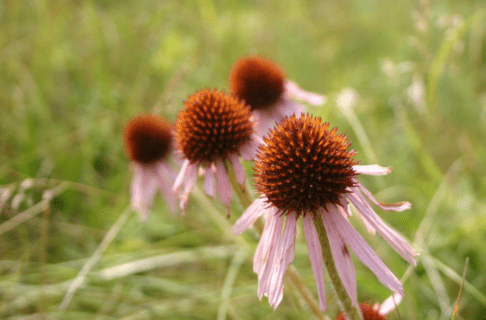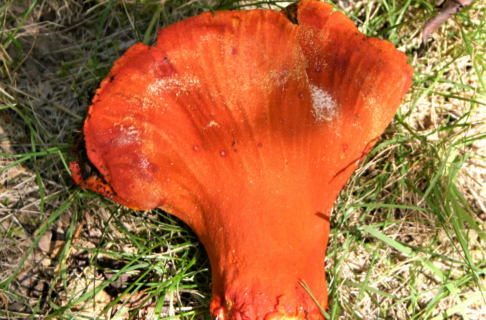Posted on: Friday May 2, 2014
Bogs are fascinating habitats that contain many bizarre species of plants. In the Manitoba Museum’s Boreal Forest Gallery, we have a lovely diorama that depicts what a typical bog looks like. Recently an intern at the Museum, Jon Makar, prepared a report on some of the unusual plants depicted in this diorama. Here’s what he found out!
First off, what exactly is a bog? Bogs are formed when sedges, rushes, and Sphagnum mosses completely cover wetlands, eventually forming a floating mat of vegetation. Bogs are fed only by rainwater and are thus poor in nutrients. Bogs are also very acidic because Sphagnum produces acids as waste products; this makes the bog less suitable for other plants. The acidity of the water in bogs decreases the rate of decomposition, which results in a build up of “peat moss” over time.
A common woody species found in bogs is black spruce (Picea mariana). One reason black spruce can survive in bogs is due its symbioses with special mycorrhizal fungi. These fungi wrap around the tree roots and provide it with nutrients in exchange for carbohydrates. Minerals like magnesium, potassium, and calcium as well as phosphates and nitrates are some of the important nutrients that fungi obtain and share with the tree.
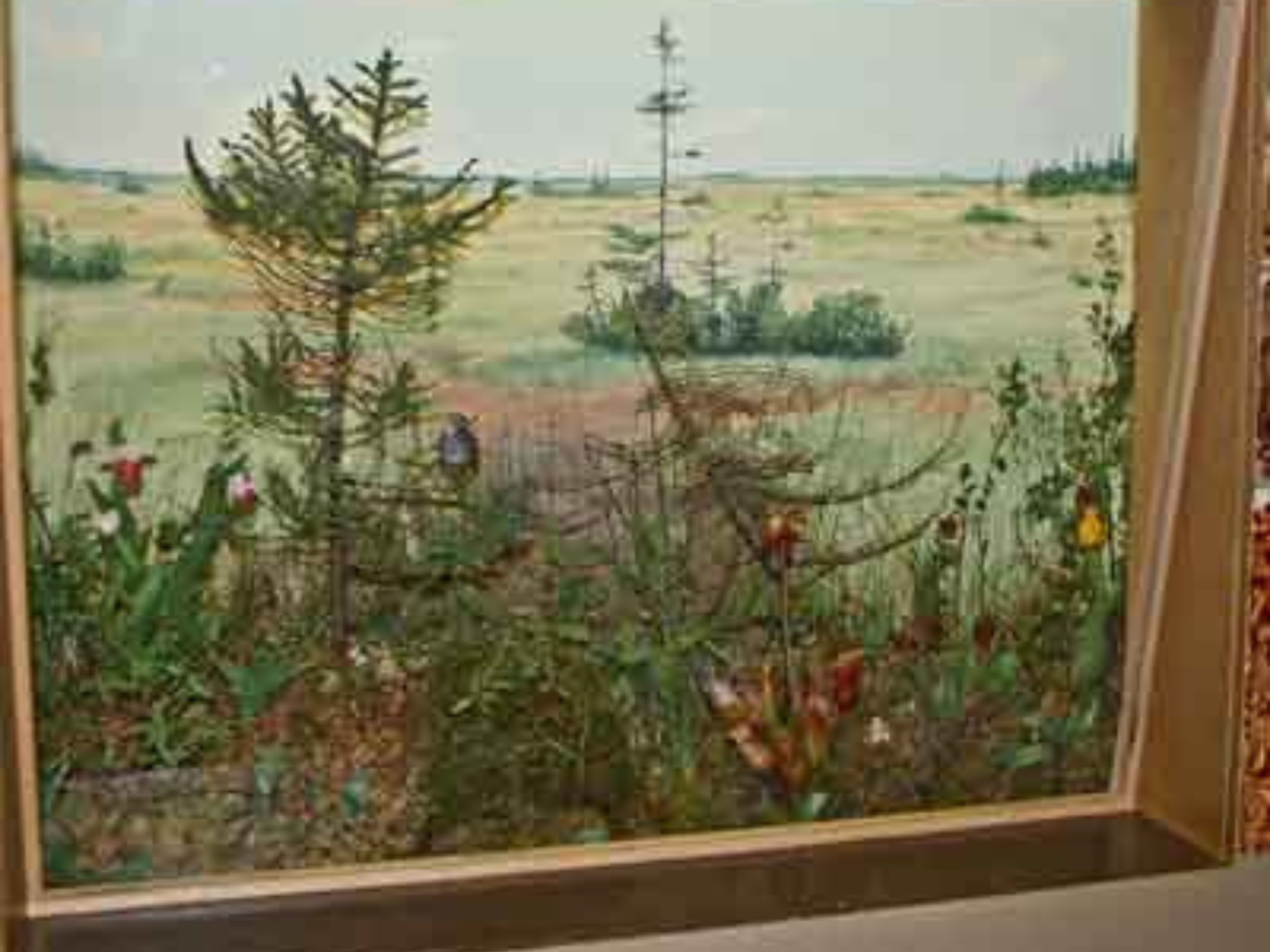
The Museum has a great bog diorama in the Boreal Forest Gallery.
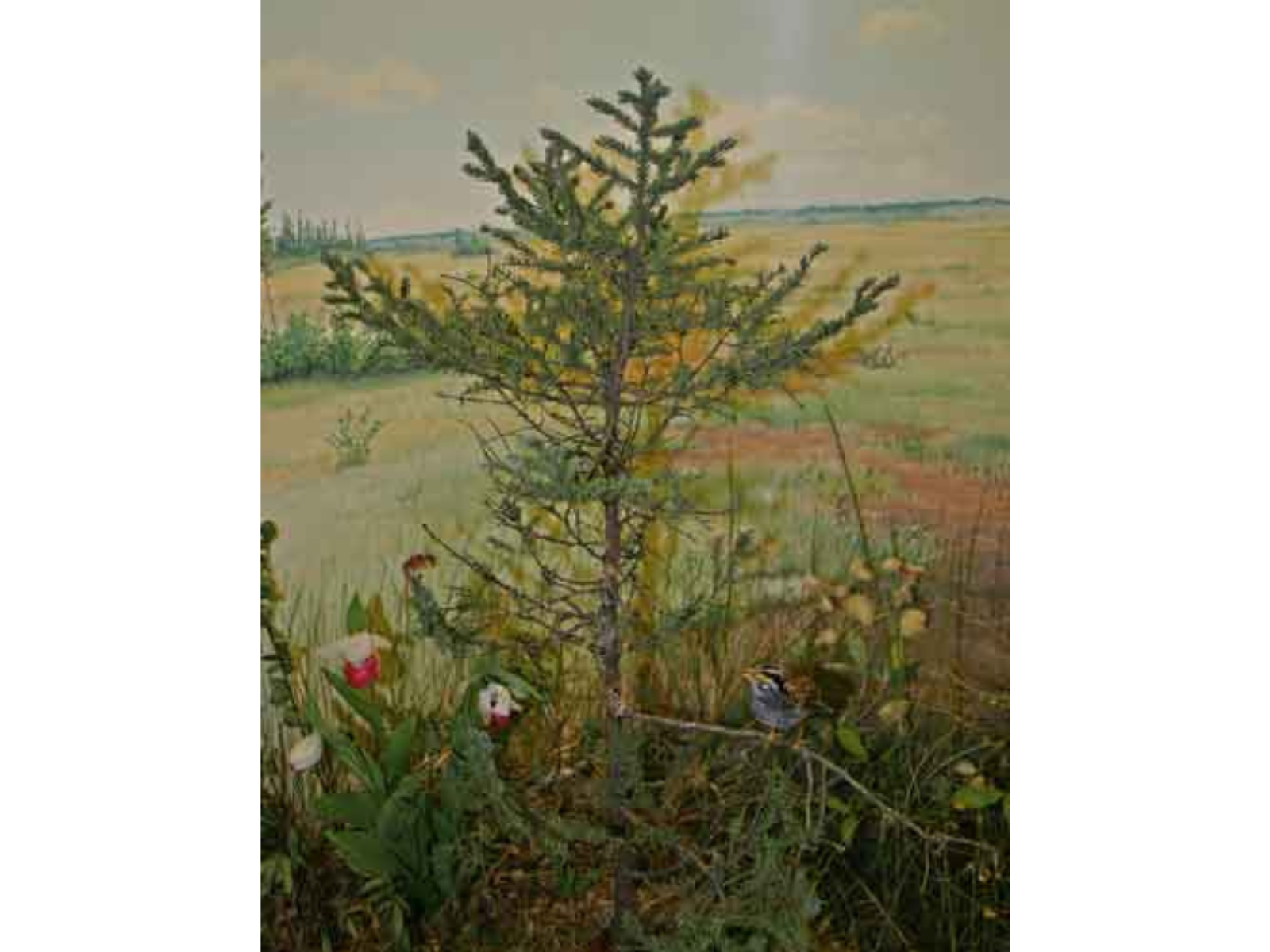
Black spruce (Picea mariana) trees are common in bogs.
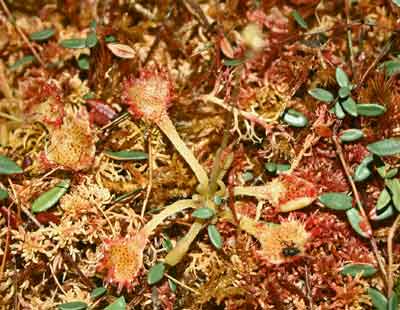
Round-leaved sundew (Drosera rotundifolia) is one of the carnivorous plants that live in bogs. Sundews have unique leaves that are covered with long tentacles, each topped with a drop of clear, sticky mucilage. This mucilage is why sundews get their name, as it appears as if there is always dew on the leaves. When an insect lands on a leaf, it sticks to the tentacles. These tentacles are sensitive to motion and move towards the centre of the leaf upon being irritated. The tentacles wrap the insect up and immobilize it, where after, the glands on the tentacles, secrete enzymes which digest the insect. Studies show that carnivory in plants is an adaptation to low nitrogen environments, such as bogs.
Image: Round-leaved sundew (Drosera rotundifolia) plants eat bugs!
Orchids are another group of plants that can be found in the bog diorama; round-leaved orchid (Amerorchis rotundifolia), showy lady’s-slipper (Cypripedium reginae), yellow lady’s-slipper (Cypripedium parviflorum), and grass pink (Calopogon tuberosus) models were created by the Museum’s diorama artist. All orchids depend on insects for pollination. Lady’s-slipper orchids trap pollinators inside the “slipper” as the walls are-you guessed it-slippery, meaning the pollinator can’t climb out the way it came. A hairy strip at the back of the slipper gives the pollinator footing and allows it to escape through a back entrance, but only once it has brushed past the stigma, pollinating the flower if it had any pollen sacs attached to it. As the insect moves past the stigma it brushes past the anthers, causing new pollen sacs to stick to it and be taken to the next lady’s slipper.
This small round-leaved orchid (Amerorchis rotundifolia) model was made by the Museum’s diorama artist.
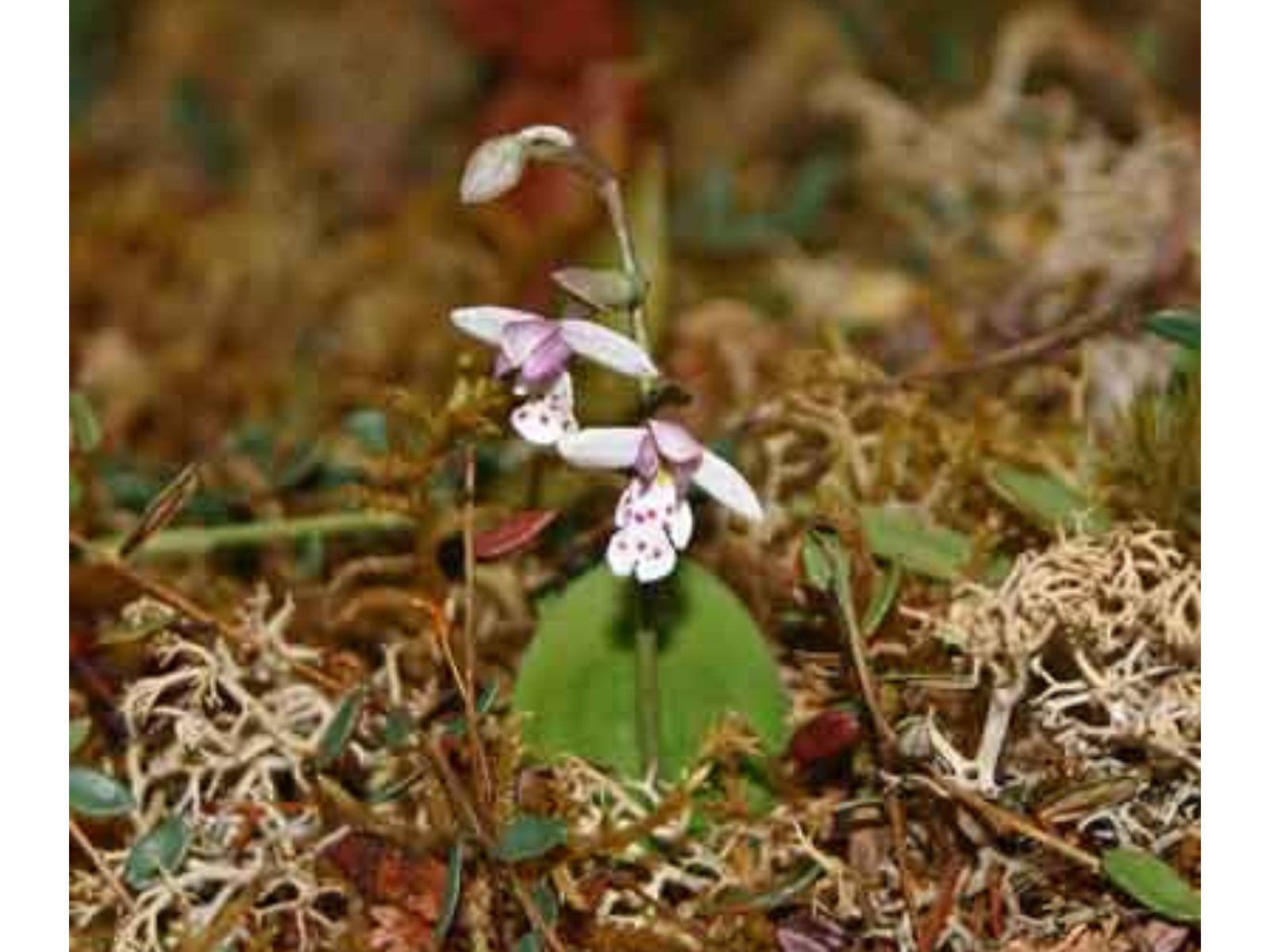
This small round-leaved orchid (Amerorchis rotundifolia) model was made by the Museum’s diorama artist.
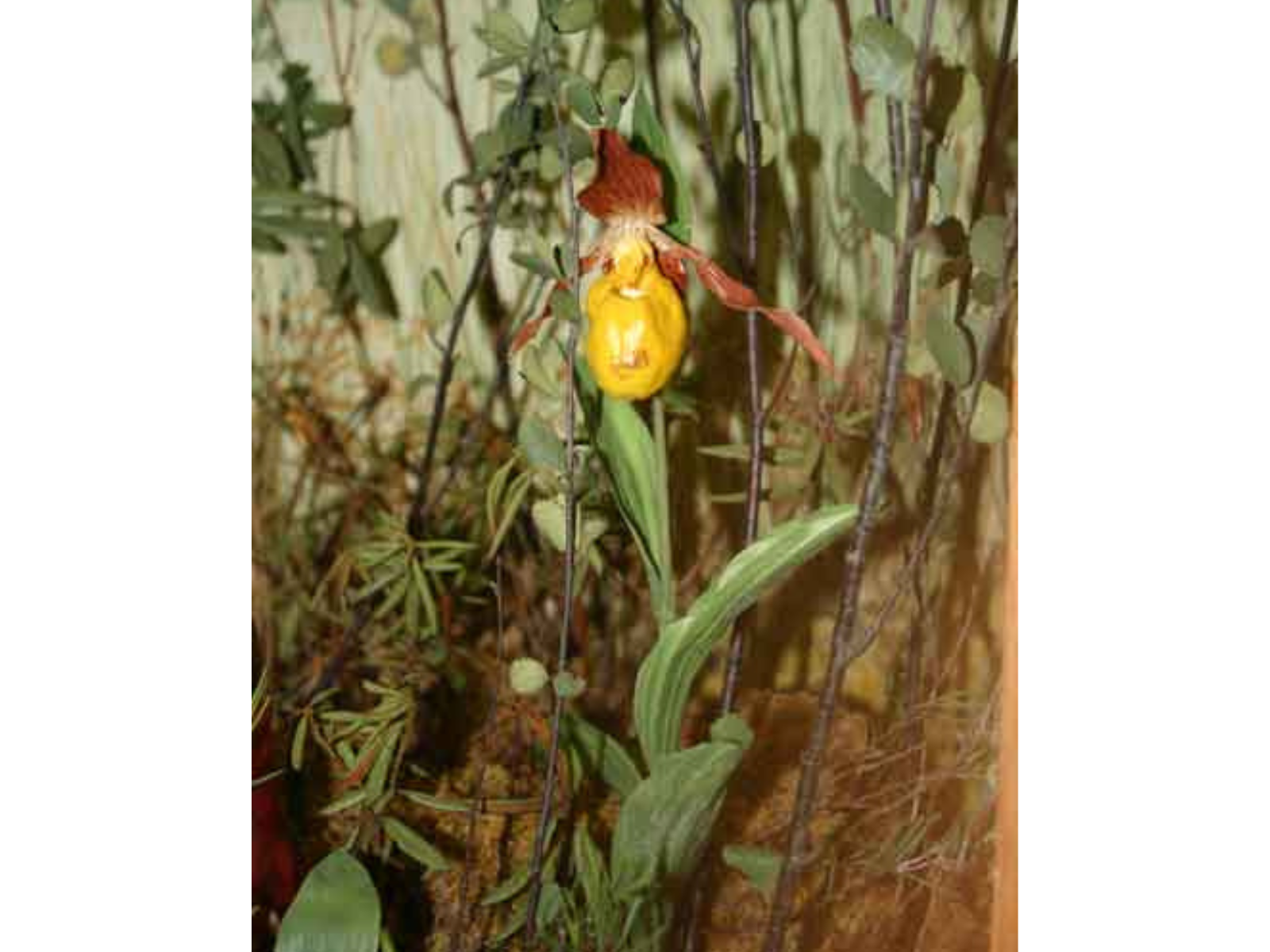
Yellow lady’s-slipper orchids (Cypripedium parviflorum) trap insects in their slipper so they will pollinate them.
The dioramas at the Museum contain hundreds of fascinating plant species that are usually over shadowed by the large mammals. The bog diorama is an exception to this, focusing instead on the plants and tiny animals that are part of our boreal forests.




